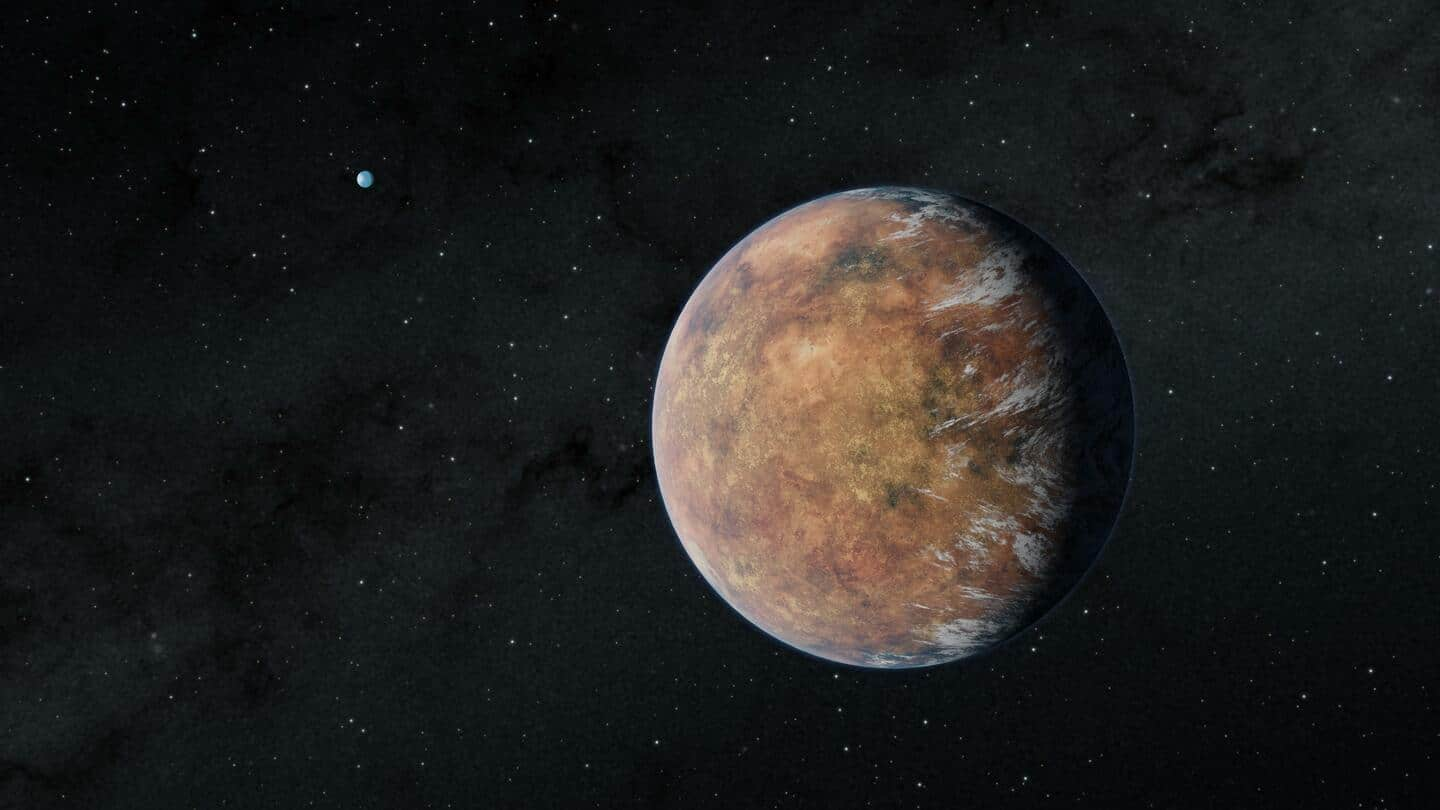
NASA's TESS telescope spots a possibly habitable Earth-sized exoplanet
What's the story
Astronomers, with the help of NASA's Transiting Exoplanet Survey Satellite (TESS), have discovered an exoplanet, called TOI 700 e, which is 95% Earth's size and is likely to be rocky like our planet.
What's interesting is that this Earth-like exoplanet is orbiting its host star (TOI 700) within a habitable zone, at a distance where it might be able to retain liquid water.
Context
Why does this story matter?
The TESS mission was launched in April 2018. Since then the all-sky survey satellite has identified about 6,000 candidate exoplanets out of which over 200 have been confirmed.In the alien planetary system where TOI 700 e has been discovered, scientists have previously found three other planets - TOI 700 b, TOI 700 c, and TOI 700 d.
Discovery
The host star lies roughly 100 light years from Earth
TOI 700 e is the second Earth-sized world to be discovered in the unknown planetary system. The first was TOI 700 d, which also lies in the same habitable zone around the star.
TOI 700, the host star of this planetary system, is located 100 light-years from Earth in the southern constellation Dorado. The star is roughly 40% of the Sun's mass and size.
Process
How did TESS spot the Earth-like exoplanet?
TESS surveys the sky in portions, called sectors, for roughly 27 days at a time. The satellite tracks changes in the host star's brightness caused by a planet crossing in front of it, along our line of sight. The event is called transit.
Based on the changes in the star's light, astronomers can determine factors such as the planet's size and orbital time.
Exoplanets
TOI 700 b is the innermost planet of this system
The newly discovered exoplanet TOI 700 e is about 10% smaller than TOI 700 d.
TOI 700 b, the innermost planet of this system, is roughly 90% Earth's size and takes 10 days to complete one orbit.
TOI 700 c is more than 2.5 times larger than our planet and completes an orbit every 16 days while planet d has a 37-day orbit.
Positioning
TOI 700 e completes one orbit in 28 days
TOI 700 e takes 28 days to orbit its star, placing it between planets c and d, in the so-called habitable zone.
It is predicted that these planets are tidally locked, which means they spin only once per orbit in such a way that one side always faces its star, just as one side of the Moon is always turned toward Earth.
Future studies
Follow-up studies are being carried out by ground-based observatories
Scientists explain that this "habitable zone" is where liquid surface water might have been present at some point in the planet's history.
Finding similar Earth-size planets in this region will help us better understand the history of our own solar system.
Follow-up investigations of this system are being conducted by space- and ground-based observatories which might yield further insights into this rare planetary system.